1. Participants
1.1. CSHP
1.1.1. Joel Cantor
1.1.2. Margaret Koller
1.1.3. Jeanette Santoro
1.1.4. Jolene Chou
1.2. CCHP
1.2.1. Jeff Brenner
1.2.2. Naomi Wyatt
1.3. CHCS
1.3.1. Steve Somers
1.3.2. Tricia McGinnis
1.3.3. Rob Houston
1.3.4. Amanda van Vleet
1.3.5. Roopa Mahadevan
1.4. PICO
1.4.1. Gordon Whitman
1.4.2. Kamara O'Connor
1.4.3. Crystal McDonald
2. Agenda
2.1. Introductions
2.2. Mission/vision statement
2.3. Leadership structure, decision-making and flow of information
2.4. Update on project status
2.4.1. Introductory calls with sites
2.4.2. call with CMS project officer
2.4.3. calls with PICO organizers
2.4.4. Update on related projects
2.4.5. CMS operational plan (due 8/10)
2.5. Technical assistance and Learning Network
2.5.1. Planning calls with sites
2.5.2. Planning for in-person meeting in Sep/Oct
2.5.3. Schedule standing functional calls?
2.5.4. Develop templates
2.5.4.1. Patient poulation
2.5.4.2. Agreements with hospitals
2.5.4.3. Organizational flowchart for community governance structure
3. Communications strategies
3.1. Steering Committee meetings
3.1.1. Monthly calls (1 hr)
3.1.2. Quarterly in-person (3 hrs)
3.2. Clinical sites
3.2.1. Site PI identifies point person(s) and determines the level of participation of clinical staffers and community partners based on content of call
3.2.2. Weekly calls with project managers
3.2.3. Monthly all-hands call with all sites, to start (1.5 hrs)
3.2.3.1. Clinical champion
3.2.3.2. Nurse / social worker
3.2.3.3. Community partner / organizer
3.2.3.4. Project manager
3.2.4. Make available weekly "office hours" to talk with individual site (1 hr, with appt)
3.2.5. First TA call: Jeff to facilitate
3.2.6. Kickoff meeting: Fall 2012, possibly in Philly following PICO meeting (10/2-3) in DC (1 day)
3.2.6.1. Steering committee
3.2.6.2. Clinical sites
3.2.6.3. PICO partners
3.3. External communication (Dissemination)
3.3.1. Form communications workgroup to formulate dissemination strategy
4. Next steps
4.1. Update and circulate mission / def of success
4.2. Update and circulate driver diagram
4.3. Data discussion with Ken Gross @CCHP
4.4. CCHP - 1-page HU care model
4.5. Set up first TA call (with Jeff):
4.5.1. data metrics
4.5.2. staffing
4.5.3. enrollment targets
4.6. Propose possible dates of project kickoff meeting
4.7. Circulate project contact list
4.8. Form data and communications workgroups
5. Mission / definition of success
5.1. Draft version 7/16/2012
5.2. Updated 7/23
6. Driver diagram
6.1. Draft version 7/19
6.2. Updated 7/23
7. Data elements & reporting
7.1. Harmonize with AF4Q, CMWF, Nicholson, etc. as much as possible
7.2. Critical for success: Clinical sites start talking to respective hospitals, then introduce collaborative data sharing agreement
7.3. Billing history: Provide template of patient release form, to be signed by all patients enrolled
7.4. Standardized templates for all sites
7.5. Monthly reporting to CSHP
7.6. Project deliverables:
7.6.1. 1-year pre-enrollment hospital use data:
7.6.1.1. # Inpatient stays
7.6.1.2. Hospital utilization history
7.6.1.3. Diagnoses
7.6.2. Other metrics:
7.6.2.1. Staffing: New hires, jobs created, training
7.6.2.2. # Patients enrolled and visits (all de-identified)
7.7. HU care model adoption:
7.7.1. From Camden's experience: Hospital utilization most important; leakage rate
7.7.2. Track "dose": minutes of encounter, staff members, location of contact, basic work category (work allocation of HU care team)
7.7.3. Sites should consider qualitative interviews with HU patients (CCHP aiming to interview all patients touched)
7.7.4. Cloud-based basic EHR, possibly for direct data input in fieldwork (offline access?); est $10-15K
8. Facilitating HU model adoption
8.1. Present high-level structure (6 goals from driver diagram) and allow sites to fill in specifics:
8.1.1. Patients
8.1.2. Collaboration
8.1.3. Program management and staffing
8.1.4. Measurements and data
8.1.5. Sustainability
8.1.6. Telling the world
8.2. CCHP to produce a 1-page model with variations for different levels of readiness:
8.2.1. Optimal
8.2.2. Intermediate
8.2.3. Minimal
8.3. HU care team composition generally RN + LPN + Health coach / social worker; will be site specific
8.4. Pre-implementation: Ask each HU team to identify 1-2 patients and do a case study; case discussions
8.4.1. May be illustrative: Videos from Beebe Medical Center (DE) and York Hospital (PA)
8.5. Start with informal dialogue, do a small pilot; scale the model when process is running rapidly and smoothly
8.6. Align efforts in various Medicaid ACO projects (e.g., AF4Q, Nicholson, Commonwealth Fund, Atlantic Philanthropies, etc.) in data collection, toolkit and other resources, model communication and dissemination
9. Patient identification & enrollment
9.1. Camden's lessons:
9.1.1. Focus on inpatient high utilizers (no longer going after high ED users)
9.1.2. Manual data input: Pt name, PCP, insurance, # inpatient visits, # ED visits, ...
9.1.3. High risk = 4 hospital admissions in 6 months, complex social and medical issues
9.1.4. Intermediate risk = 2-4 admissions in 6 months, complex comorbidities
9.1.5. Challenges:
9.1.5.1. Reach patients imeediately and catch them while in hospitals, and follow from discharge for 2 week
9.1.5.2. Target the right patients: Differentiate responders and non-responders
9.1.5.3. Major bottleneck: Connection with 1-2 hospitals
